Cancer Chemotherapy, Immunotherapy, and Biotherapy 7th Edition Chabner Test Bank
1 Clinical Strategies for Cancer Treatment: The Role of Drugs Introduction
2 Target Identification and Drug Discovery Introduction A Brief History of Cancer Drug Discovery
3 Clinical Drug Development and Approval Introduction
4 Pharmacogenomics and Cancer Therapeutics Introduction
5-Fluorouracil Thiopurine Drugs (Mercaptopurine and Thioguanine)
6 Antifolates Folate Biochemistry Membrane Transport
7 5-Fluoropyrimidines Introduction Structure and Cellular Pharmacology
8 Cytidine Analogues Cytosine Arabinoside (Cytarabine) Mechanism of Action
9 Purine Analogues 6-Mercaptopurine Mechanism of Action
10 Antimitotic Drugs Microtubule Structure Microtubule Function
11 Alkylating and Methylating Agents Introduction Alkylating Reactions
12 Platinum Analogues Introduction
13 Topoisomerase Inhibitors Topoisomerase Biology Nucleic Acid Topological Problems and Their Resolution by Topoisomerases Classification and Distinctive Features of the Six Human Topoisomerases Topoisomerase Cleavage Complexes and Their DNA Damaging Effects Repair of Topoisomerase Cleavage Complexes Resistance and Molecular and Genomic Determinants of Response to Topoisomerase Inhibitors Food and Drug Administration–Approved Topoisomerase I Warheads Topotecan Irinotecan Food and Drug Administration–Approved Topoisomerase II Inhibitors Daunorubicin (Daunomycin) and Doxorubicin Liposomal Daunorubicin and Doxorubicin Anthracenediones Epipodophyllotoxins Tumor-Targeted Delivery Liposomal Irinotecan Trastuzumab Deruxtecan Sacituzumab Govitecan Novel Tumor-Targeted Topoisomerase Inhibitors and Combinations Acknowledgments 14 Bleomycin, Mitomycin C, Yondelis, and Other Antibiotics Introduction Structure and Mechanism of Action Mechanism of Antitumor Action Cellular Pharmacology Resistance Clinical Pharmacology Clinical Toxicity and Side Effects Pulmonary Toxicity of Bleomycin Cutaneous Toxicity Schedules of Administration Radiation and Drug Interaction Mechanism of Action and Cellular Pharmacology Mechanism of Resistance Clinical Pharmacology Toxicity Mechanism of Action and Cellular Pharmacology Mechanism of Action: Formation of DNA Chemical Analysis of DNA Adducts Mechanism of Resistance Clinical Pharmacology Toxicity Mechanism of Action Resistance Mechanisms Clinical Pharmacology Toxicity Drug Interactions 15 Epigenetic Agents in Hematology and Oncology Histone Deacetylase Inhibitors Mechanism of Action Histone Deacetylase Inhibitors and Gene Transcription Pleiotropic Effects of Histone Deacetylase Inhibitors Chemical Structure and Classification of Histone Deacetylase Inhibitors in Clinical Use Pharmacodynamic and Pharmacokinetic Data Histone Deacetylase Inhibitor Side Effect Profile Tissue-Type Selectivity and Single-Agent Studies Combination Therapies With Epigenetic Agents, Chemotherapy, Radiation, Targeted Agents, and Immunotherapy Isocitrate Dehydrogenase Inhibitors Mechanism of Action in Cancer Pharmacodynamics and Pharmacokinetics Side Effects and Toxicity Clinical Trials Zeste Homologue 2 Inhibitors Mechanism of Action Pharmacodynamics and Pharmacokinetics Side Effects and Toxicity Clinical Trials Conclusion 16 Differentiating Agents in Acute Promyelocytic Leukemia Introduction All-Trans Retinoic Acid Mechanism of Action Clinical Pharmacology Arsenic Trioxide Mechanism of Action Clinical Pharmacology Clinical Toxicity 17 Asparaginase Introduction Properties and Mechanism of Action Cellular Pharmacology Resistance to L-Asparaginase Chemical Modification and Alternative Sources of Enzyme Clinical Pharmacology Pharmacokinetics Toxicity Hypersensitivity and Enzyme Inactivation Drug Interactions New Preparations of Asparaginase 18 Proteasome Inhibitors Ubiquitin-Proteasome Pathway Chemistry, Structure, and Function of Proteasome Inhibitors Peptide Boronates β-Lactones Epoxyketones Mechanism of Action Bortezomib Clinical Pharmacology Pharmacodynamics Multiple Myeloma Adverse Events With Bortezomib Bortezomib in Other Diseases Solid Tumors Carfilzomib Clinical Pharmacology Multiple Myeloma Ixazomib Clinical Pharmacology Multiple Myeloma Novel Proteasome Inhibitors Marizomib Oprozomib Drug Resistance Conclusions Acknowledgments 19 Cereblon-Mediated Degraders Discovery and Mode of Action of Thalidomide Pharmacology of Thalidomide Pharmacokinetics Absorption Distribution Metabolism Clearance Drug Interactions Adverse Effects Pharmacology of Lenalidomide (Revlimid) Adverse Effects of Lenalidomide Pharmacology of Pomalidomide Clinical Studies of Thalidomide and Its Derivatives in Multiple Myeloma Use of Thalidomide in Multiple Myeloma Combinations of Lenalidomide or Other Thalidomide Derivatives With Proteasome Inhibitors: A Key Backbone for Multiple Myeloma Therapy The Impact of Novel Immunotherapies for Multiple Myeloma on the Clinical Uses of Lenalidomide and Other IMiDs Pomalidomide Clinical Studies of Thalidomide and Its Derivatives in Neoplasias Beyond Multiple Myeloma Cereblon-Mediated Degraders: Iberdomide and Mezigdomide Iberdomide Mezigdomide Conclusion Acknowledgment Section II: Targeted Agents 20 Tyrosine Kinase Inhibitors Introduction Non–Small Cell Lung Cancer Epidermal Growth Factor Receptor Mutation Anaplastic Lymphoma Kinase Rearrangement c-ROS Oncogene 1 Translocation Mesenchymal-Epithelial Transition Mutation and Amplification Human Epidermal Growth Factor Receptor 2 Mutation Bladder and Bile Duct Cancers Fibroblast Growth Factor Receptor Mutation Tumor-Agnostic Kinases Neurotrophic Tropomyosin Receptor Kinase REarranged During Transfection Alterations 21 Mitogen-Activated Protein Kinase Pathway Introduction Mitogen-Activated Protein Kinase Pathway Overview Mitogen-Activated Protein Kinase Pathway in Cancer Inhibitors of Mutant BRAF in Melanoma BRAF Inhibition in Other Cancers Toxicity of BRAF Inhibitors MEK Inhibitors Combined BRAF and MEK Inhibition Melanoma Combined BRAF/MEK Inhibitors in Other Tumors Combination Mitogen-Activated Protein Kinase Inhibition Plus Immunotherapy Resistance to BRAF Inhibition KRAS G12C Inhibitors Resistance to G12C Inhibitors Experimental Approaches ERK Inhibition Dimer-Disrupting RAF Inhibitors MEK Inhibitor Combinations Conclusions 22 The PI3K/AKT/mTOR Signaling System Overview Role of Mammalian Target of Rapamycin Deregulation of the PI3K/AKT/mTOR Pathway in Human Cancer Mammalian Target of Rapamycin Inhibitors Rapamycin (Sirolimus, Rapamune) Temsirolimus (CCI-779, Torisel) Everolimus (RAD001, Afinitor) Resistance to mTORC1 Inhibitors TORC1/TORC2 Inhibitors AKT Inhibitors Capivasertib Ipatasertib PI3K Inhibitors Mutant-Selective PI3Kα Inhibitors GDC-0077 (Inavolisib) RLY-2608 LOXO-783 STX-478 PI3Kδ Inhibitors in Lymphoid Malignancy Idelalisib Clinical Pharmacology and Toxicity Copanlisib Duvelisib Conclusion Investigational PI3Kγ Inhibitors IPI-549 (Eganelisib) 23 Cyclin-Dependent Kinase Inhibitors Introduction Cell Cycle Cyclin-Dependent Kinases and Cell Cycle Control Altered Expression of Cell Cycle Cyclin-Dependent Kinases and Their Regulators in Cancer Selective CDK4/6 Inhibitors Overview Selective CDK4/6 Inhibitors in Breast Cancer Breast Cancer Monotherapy Combined Hormonal and CDK4/6 Inhibitor–Based Treatment in Advanced HR+ Breast Cancer Combined Hormonal Therapy and CDK4/6 Inhibition in Neoadjuvant Trials in HR+ Breast Cancer Combined Hormonal and CDK4/6 Inhibitor–Based Treatment as Adjuvant Therapy in Early-Stage HR+ Breast Cancer Combinations With HER2− Targeted Treatment in HER2+ Disease Selective CDK4/6 Inhibitors in Other Cancer Types Mantle Cell Lymphoma Liposarcoma Lung Cancer Predictive Genomic Biomarkers for Cytotoxic Response Combined CDK4/6 and Signal Transduction Inhibition Combined Inhibition of CDK4/6 and Phosphatidylinositol 3-Kinase Pathway Signaling Combined CDK4/6 and MEK Inhibition CDK4/6 Inhibition and Cytotoxic Chemotherapy Intrinsic Resistance and Acquired Resistance to CDK4/6 Inhibition Effects of CDK4/6 Inhibitors on the Immune Microenvironment Selective CDK4 Inhibition Inhibitors of Other Cell Cycle Cyclin-Dependent Kinases Inhibition of Transcriptional Cyclin-Dependent Kinases Conclusions Acknowledgments Conflict of Interest Statement 24 Drugs Targeting the ABL and Janus Kinases Chronic Myeloid Leukemia Imatinib Dasatinib Nilotinib Bosutinib Ponatinib Asciminib Omacetaxine Clinical Use of Targeted Chronic Myeloid Leukemia Therapeutics Frontline Therapy of Chronic-Phase Chronic Myeloid Leukemia Second-Line Treatment and Beyond Other Clinical Uses of Tyrosine Kinase Inhibitors Philadelphia-Negative Myeloproliferative Neoplasms Ruxolitinib Fedratinib Pacritinib 25 Bruton Tyrosine Kinase Inhibitors Introduction Normal B-Cell Receptor Signaling Pathogenic B-Cell Receptor Signaling Pharmacologic Properties of Approved Bruton Tyrosine Kinase Inhibitors Toxicities of Bruton Tyrosine Kinase Inhibitors Resistance Mechanisms to Bruton Tyrosine Kinase Inhibitors Clinical Activity of Bruton Tyrosine Kinase Inhibitors in Chronic Lymphocytic Leukemia Clinical Activity of Bruton Tyrosine Kinase Inhibitors in Mantle Cell Lymphoma Clinical Activity of Bruton Tyrosine Kinase Inhibitors in Waldenstrom Macroglobulinemia Clinical Activity of Bruton Tyrosine Kinase Inhibitors in Marginal Zone Lymphoma Investigational Use of Bruton Tyrosine Kinase Inhibitors in Diffuse Large B-cell Lymphoma Bruton Tyrosine Kinase Inhibitors for Lymphomas Involving the Central Nervous System Conclusions Acknowledgments Conflict of Interest 26 Angiogenesis Inhibitors Introduction Biochemical Backbone Normal Physiology Pathologic Angiogenesis and the Angiogenic Switch Malignant Angiogenesis as a Therapeutic Target Anti-angiogenic Cancer Therapeutics Common Toxicities of Vascular Endothelial Growth Factor Pathway Inhibitors Use in Special Populations Vascular Endothelial Growth Factor–Targeted Therapy Vascular Endothelial Growth Factor Receptor–Targeted Therapy Multikinase Inhibitors Future Directions Conclusion Section III: Hormone Antagonists for Breast Cancer 27 Endocrine Therapy of Breast Cancer Introduction Estrogen Receptor Estrogen Receptor Structure Classical Estrogen Receptor Signal Transduction Ligand-Dependent Estrogen Receptor Signaling Tamoxifen: The First Selective Estrogen Receptor Modulator Clinical Use Tamoxifen Metabolism and Pharmacokinetics Drug Interactions Tamoxifen Side Effects Other Selective Estrogen Receptor Modulators Background Raloxifene Toremifene Fulvestrant and Elacestrant: A Selective Estrogen Receptor Degraders Background Mechanism of Action Clinical Use Pharmacology Metabolism Side Effects Elacestrant Pharmacokinetics Aromatase Inhibitors Background Development of Aromatase Inhibitors Exemestane: Steroidal Aromatase Inhibitor Nonsteroidal Aromatase Inhibitors Anastrozole Letrozole Aromatase Inhibitors in Premenopausal Women Progestins Luteinizing Hormone–Releasing Hormone Agonists Background Endocrine Resistance ESR1 Mutation, Splice Variants, and Isoform Ratio Coactivators and Corepressors Growth Factor Signaling Pathways Strategies to Combat Endocrine Resistance Future Directions 28 Hormonal Therapy for Prostate Cancer Introduction Androgen Structure, Synthesis, and Signaling Androgen Structure and Biosynthesis Control of Androgen Levels The Androgen Receptor Androgen Receptor Signaling Clinical Applications Chemoprevention of Prostate Cancer Localized Prostate Cancer Recurrent Prostate Cancer Metastatic Prostate Cancer Approaches to Hormone Therapy Treatment Options Mechanisms of Resistance to Hormone Therapy Future Directions Section IV: Immune-Based Therapies 29 Monoclonal Antibodies Introduction Antibody Structure Antibody Naming Conventions Protein Engineering and Modified Therapeutic Antibodies Antibody Function Pharmacokinetics Mechanisms of Action Safety and Toxicities Resistance to Antibody Therapeutics Antibody-Based Drug Conjugates T-Cell–Directed Therapies Monoclonal Antibodies Used in Cancer Treatment CD20 Antibodies Rituximab (Rituxan) Ofatumumab Obinutuzumab Ibritumomab Tiuxetan (Zevalin) CD52 Antibody Alemtuzumab (Campath) CD38 Antibody Daratumumab Vascular Endothelial Growth Factor Antibodies and Receptor Mimics Bevacizumab (Avastin) Ramucirumab Aflibercept Epidermal Growth Factor Receptor Antibodies Cetuximab (Erbitux) Panitumumab (Vectibix) Necitumumab HER Family Antibodies Trastuzumab (Herceptin) Pertuzumab Ado-Trastuzumab Emtansine Signaling Lymphocytic Activation Molecule F7 Antibody Elotuzumab Platelet-Derived Growth Factor Receptor � Antibody Olaratumab Glycolipid Antigen Disialoganglioside Antibody Dinutuximab Interleukin-6 Antibody Siltuximab Tocilizumab Immune Checkpoint Inhibition Cytotoxic T-lymphocyte–Associated Protein 4 Programmed Death-1 Antibodies Pembrolizumab and Nivolumab Programmed Death Ligand-1 Antibodies Atezolizumab, Durvalumab, and Avelumab Bispecific Monoclonal Antibodies Catumaxomab Blinatumomab Tebentafusp Teclistamab-cqyv Amivantamab-vmjw Antibody-Drug Conjugates Gemtuzumab Ozogamicin (Mylotarg) Brentuximab Vedotin Inotuzumab Ozogamicin Polatuzumab vedotin Loncastuximab Tesirine Ado-trastuzumab Emtansine Enfortumab Vedotin Fam-Trastuzumab Deruxtecan Sacituzumab Govitecan Mirvetuximab Soravtansine-gynx Radiolabeled Antibodies Tositumomab and I-131 Tositumomab Ibritumomab Tiuxetan Future Directions 30 Cytokine Therapy for Cancer Introduction Cancer Immunity Cytokine Biology and Cytokine Receptors Type I Cytokine Receptors Type II Cytokine Receptors Immunoglobulin Superfamily Receptors Transforming Growth Factor-β Receptor Family Interferons Interleukins Summary Other Interleukins Granulocyte Macrophage Colony-Stimulating Factor Cytokine Inhibition as a Therapeutic Strategy Tumor Growth Factor-β Inhibition Interleukin-1β inhibition Tumor Necrosis Factor Inhibition Predictors of Response to Cytokine Therapy Challenges and Opportunities in Cytokine Therapy Conclusion 31 Adoptive Cellular Therapy Introduction and Definition History Scientific Rationale for Adoptive Cellular Therapy Allogeneic Cell Transplantation Adoptive Cellular Therapy With Natural Killer Lymphocytes Cytokine-Induced Killer Cells Tumor-Infiltrating Lymphocytes T-Cell Receptor–Engineered T Cells (TCR T) Chimeric Antigen Receptor–Engineered T Cells Adoptive Cellular Therapy With Induced Pluripotent Stem Cells Adoptive Cellular Therapy With γδ T Lymphocytes and Invariant Natural Killer T Cells T-Cell Dysfunction in Patients With Cancer Clinical Outcomes of Adoptive Cellular Therapies The Evolving Clinical Role of Allogeneic Transplant and Donor Lymphocyte Infusion Hematologic Malignancies Solid Organ Tumors Clinical Limitations of Adoptive Cellular Therapy Toxicity of Adoptive Cellular Therapies Strategies to Reduce Toxicity of Adoptive Cellular Therapy Treatment Failure and Relapse Commercialization of Adoptive Cellular Therapy Conclusions and Perspectives 32 Cancer Vaccines Overview Target Antigens Vaccine Platforms Vaccine Delivery Methods Correlation Between T-Cell Response Magnitude and Clinical Response Efficacy of Vaccine Monotherapy for Human Papilloma Virus–Induced Premalignant Lesions Immunosuppressive Mechanisms in the Cancer Microenvironment Therapeutic Vaccination Against Shared Nonviral Tumor–Associated Antigens Therapeutic Vaccination Against Mutation-Based Neoepitopes Combination Therapy in Late-Stage Cancer Combination With Standard-of-Care Chemotherapy Combination With Programmed Death 1 Checkpoint Blockade 33 Viral Xenogenization Overview of Viral Xenogenization Oncolytic Viral Therapy Viral-based Immunotherapy Gene-Therapy Delivery Oncolytic and NonOncolytic Antitumor Activity Virotherapy Efficacy and Safety Regulatory Approvals 34 Immunotherapeutic Control of Cancer Introduction Immune Regulatory Pathways and Response Initiation Biology of Cytotoxic T-Lymphocyte Antigen-4 Blockade Clinical Activity and Development of Cytotoxic T-Lymphocyte Antigen-4 Blockade Cytotoxic T-Lymphocyte Antigen-4 Blockade in Cancers With a U.S. Food and Drug Administration-Approved Indication Cytotoxic T-Lymphocyte Antigen-4 in Cancers Without U.S. Food and Drug Administration Approval Yet Programmed Cell Death-1 Biology of Programmed Cell Death-1 The Programmed Cell Death-1/Programmed Death Ligand-1 Axis: From Biology to Clinical Application Current State of the Art of Anti-Programmed Cell Death-1/Programmed Death Ligand-1 Therapy Monoclonal Antibodies Targeting Programmed Cell Death-1 Monoclonal Antibodies Targeting Programmed Cell Death Ligand-1 Comparing Programmed Cell Death-1- to Programmed Death Ligand-1-Directed Therapy Biomarkers for Programmed Cell Death-1/Programmed Death Ligand-1 Lymphocyte Activation Gene-3 Biology of Lymphocyte Activation Gene-3 Current State of Anti-Lymphocyte Activation Gene-3 Therapy Anti-Lymphocyte Activation Gene-3 Antibodies Soluble Recombinant Protein of Lymphocyte Activation Gene-3: IMP321 Bispecific Antibodies Against Lymphocyte Activation Gene-3 and PD-1/Programmed Death Ligand-1/Cytotoxic T-Lymphocyte Antigen-4 Determinants of Immunotherapy Response Tumor Mutational Burden Tumor Mutational and Neoantigen Immunogenic Quality Viral Tumor Infection Programmed Death Ligand-1 Expression Tumor-Infiltrating Lymphocytes Host Microbiome Summary Mechanisms of Resistance to Immunotherapy Principles and Challenges of Detecting Immune Checkpoint Inhibition Resistance Tumor Neoantigen Depletion Deficiency of Neoantigen Presentation Capability Immune System Dysregulation Unique Pharmacology or Interactions: Atypical Response Kinetics and Imaging Immune-Related Adverse Events Epidemiology Toxicities Commonly Associated With Immune Checkpoint Inhibitors and Management Rare Immune-Related Adverse Events Special Considerations Management Agents and Strategies in Development for Combination With Immune Checkpoint Inhibition Chemotherapy in Combination With Immune Checkpoint Inhibition Targeted Therapy in Combination With Immune Checkpoint Inhibition Radiation Therapy in Combination With Immune Checkpoint Inhibition Cryotherapy and Intratumoral Therapies in Combination With Immune Checkpoint Inhibition Cellular Therapy in Combination With Immune Checkpoint Inhibition Section V: Supportive Care 35 Antiemetics Introduction Types of Chemotherapy-Induced Nausea and Vomiting Acute Chemotherapy-Induced Nausea and Vomiting Delayed Chemotherapy-Induced Nausea and Vomiting Breakthrough Chemotherapy-Induced Nausea and Vomiting Refractory Chemotherapy-Induced Nausea and Vomiting Anticipatory Chemotherapy-Induced Nausea and Vomiting Antiemetic Agents Dopamine Receptor Antagonists Serotonin (5-Hydroxytryptamine-3) Receptor Antagonists First-Generation 5-Hydroxytryptamine-3 Receptor Antagonists Second-Generation 5-Hydroxytryptamine-3 Receptor Antagonists: Palonosetron Dopamine-Serotonin Receptor Antagonists Neurokinin-1 Receptor Antagonists Aprepitant Fosaprepitant Netupitant/Netupitant-Palonosetron Safety and Tolerability of Neurokinin-1 Receptor Antagonists Dexamethasone Olanzapine Cannabinoids Clinical Management of Chemotherapy-Induced Nausea and Vomiting Principles in the Management of Chemotherapy-Induced Nausea and Vomiting Single-Day Chemotherapy Treatment of Breakthrough Chemotherapy-Induced Nausea and Vomiting Refractory Chemotherapy-Induced Nausea and Vomiting Anticipatory Chemotherapy-Induced Nausea and Vomiting Multiday Chemotherapy and High-Dose Chemotherapy With Stem Cell or Bone Marrow Transplantation Prevention and Treatment of Nausea 36 Hematopoietic Growth Factors Introduction Biology and Pharmacology of the Hematopoietic Growth Factors The Myeloid Growth Factors The Erythropoiesis-Stimulating Agents The Thrombopoietic Agents Clinical Application of the Hematopoietic Growth Factors in Oncology Granulocyte Colony-Stimulating Factor Granulocyte-Macrophage Colony-Stimulating Factor Erythropoiesis-Stimulating Agents Thrombopoietic Agents 37 Cancer and Coagulopathy

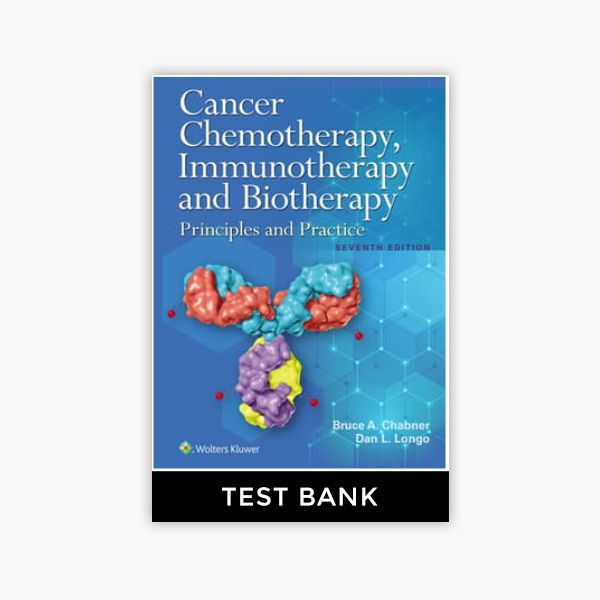




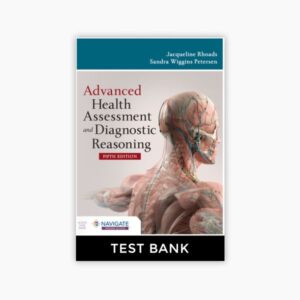
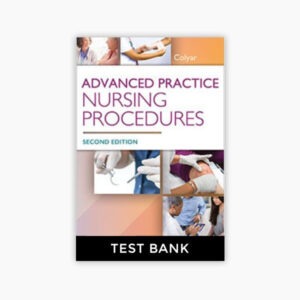
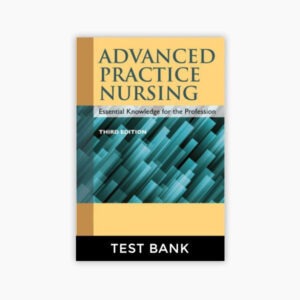
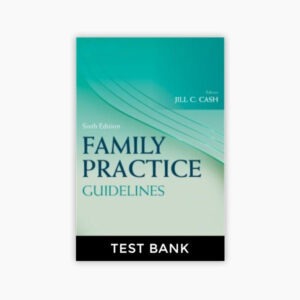




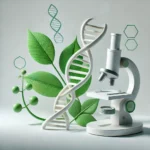





Reviews
There are no reviews yet.